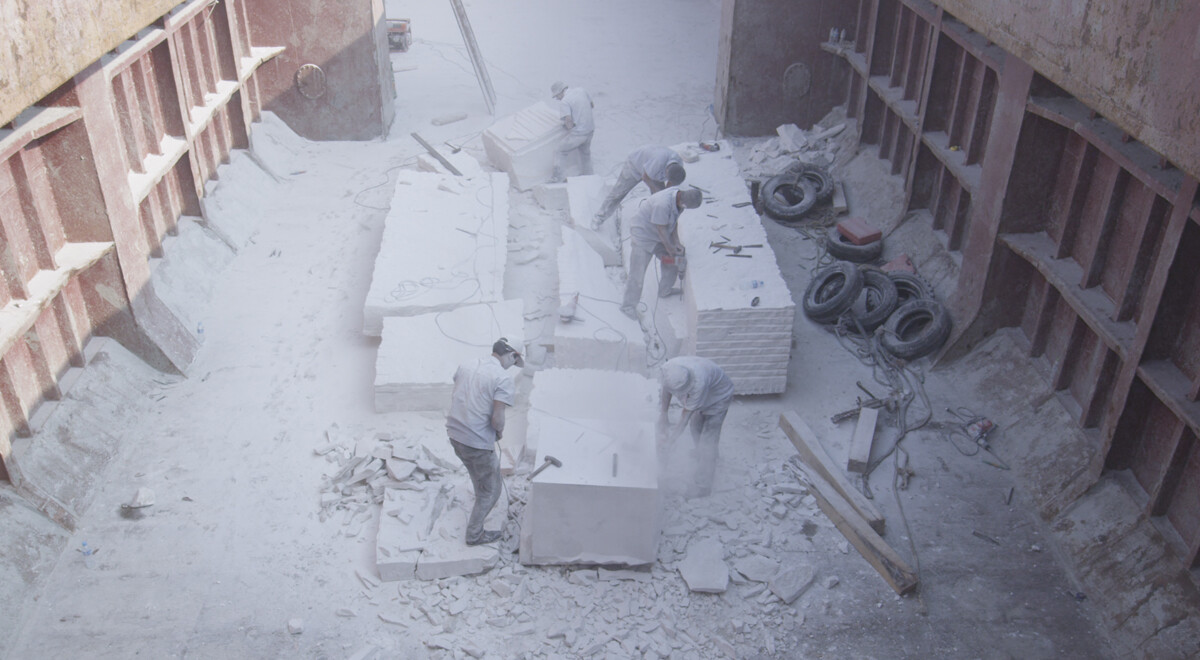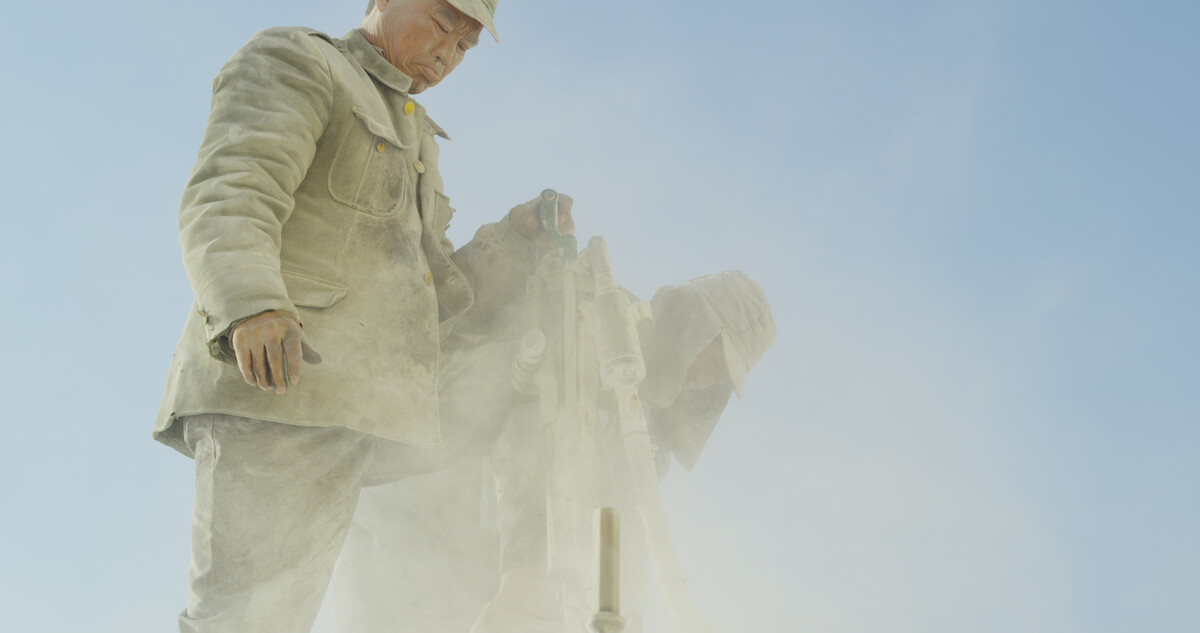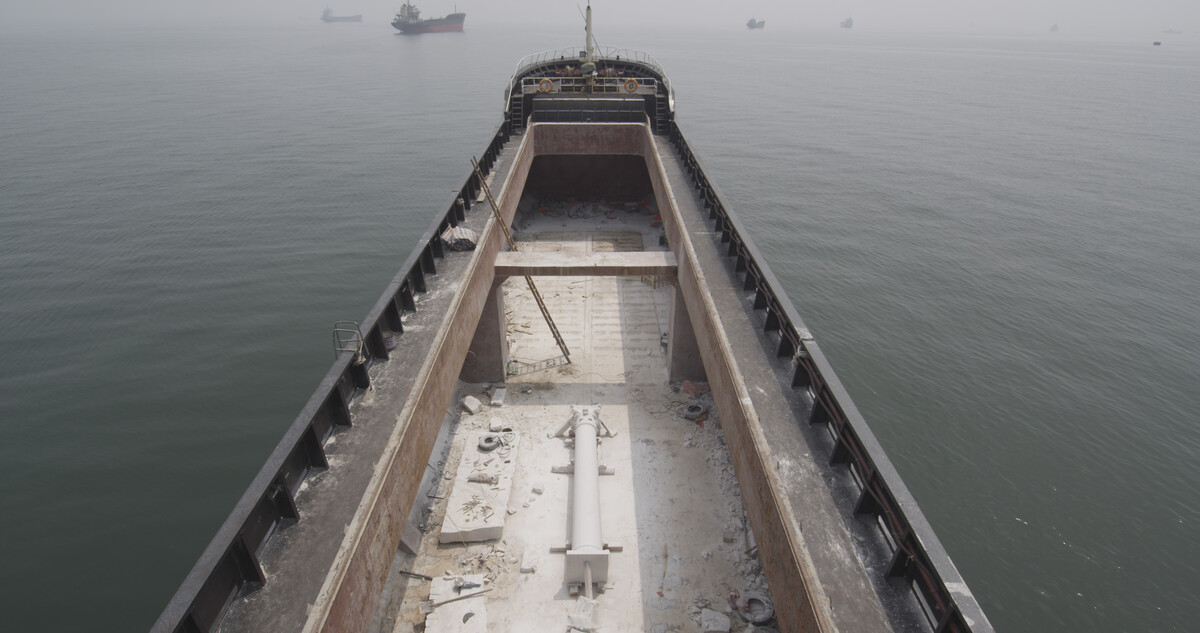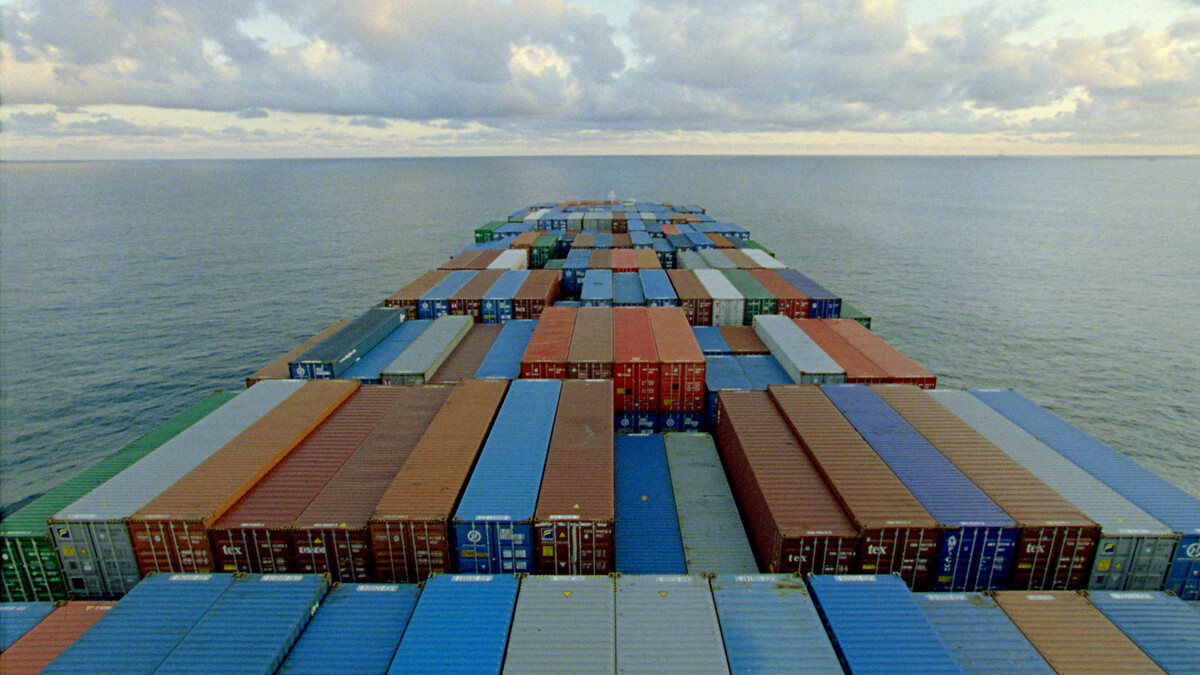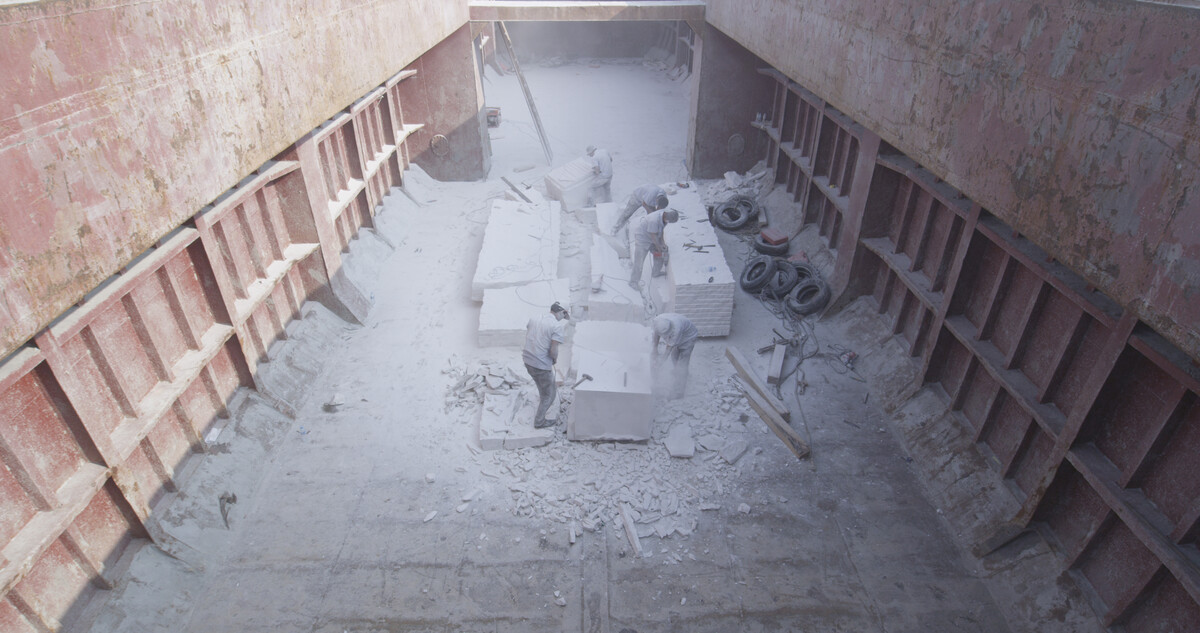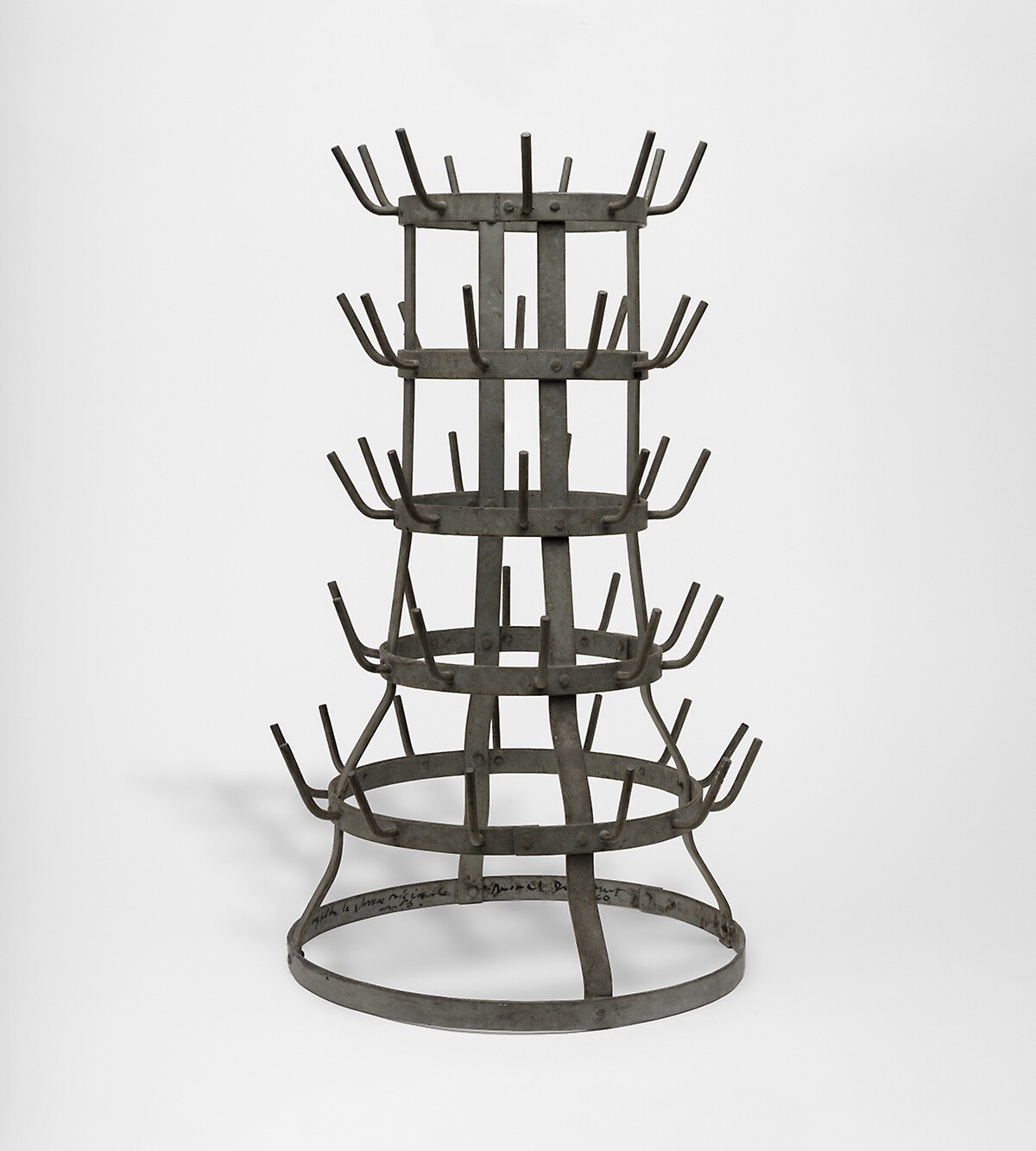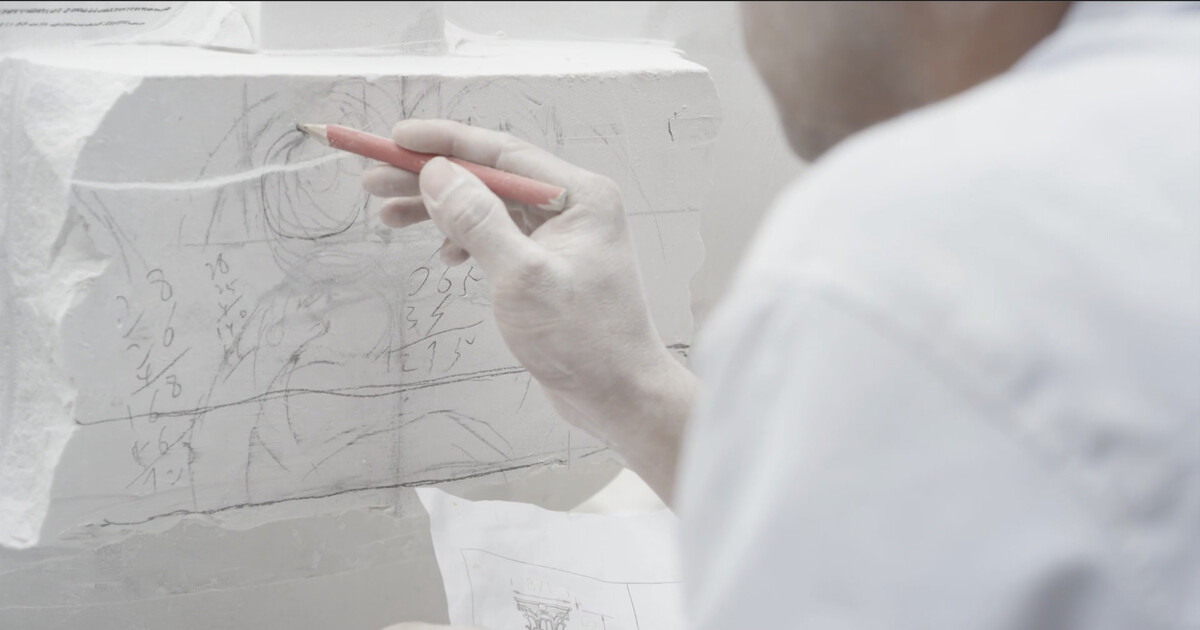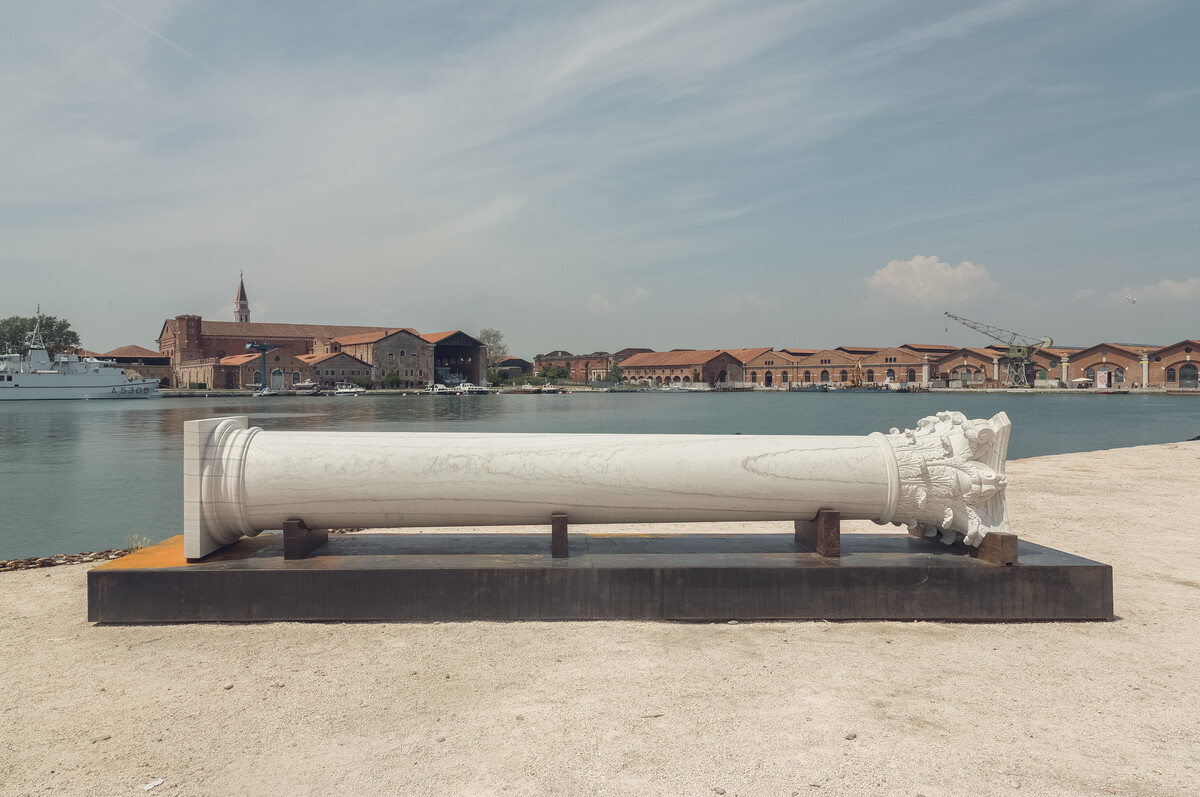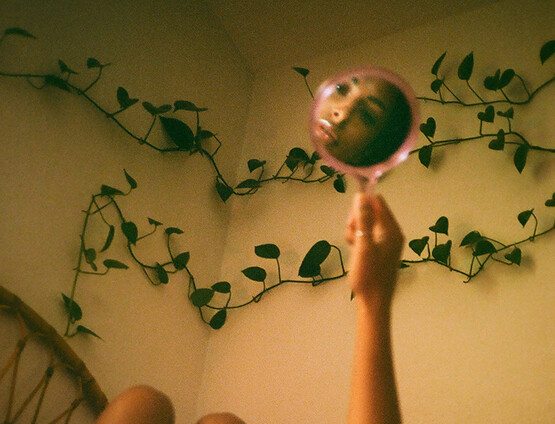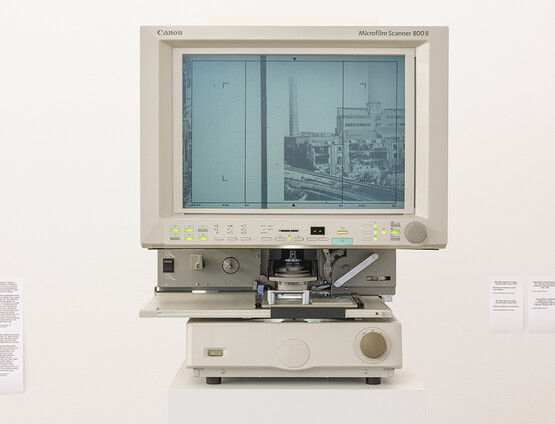The aesthetics of labour: beauty and politics in Adrian Paci’s ‘The Column’
by Sarah Messerschmidt • November 2019
In his characterisation of a ‘moral economy’ in contemporary art, Tirdad Zolghadr addresses the often contradictory motives of contemporary art practices, in particular their seemingly ‘magical ability to appear as subversive even when perfectly orthodox’.1 Zolghadr argues that although recent art regularly addresses uneven political and social conditions – he cites a number of biennials and large-scale art exhibitions as examples of this fact – most often art operates within institutionalised parameters, adopting an indeterminate position between the institutional and the anti-institutional, a condition Andrea Fraser has termed ‘the Institution of Critique’.2 Certainly, over the past several decades art has become increasingly entwined with social justice, notably in the use of the documentary form to expose inequality and human rights abuses in a fine art context.3 And yet, according to Zolghadr, art’s involvement with socio-political topics can serve to obfuscate its own position within the echelons of wealth and power it often condemns, as the artist ignores (or conceals) their complicity in systems of power by assuming positions of radical subordination. This paradox also characterises Adrian Paci’s video installation The Column (2013). Displayed alongside the marble column whose construction it documents, the work at once reveals and masks its own complicity in the neoliberal art system, cashing in on a moral economy of indeterminacy while also exposing its own ability to do so.
In the opening sequences of The Column, five Chinese men squint through clouds of dust. They are at work in a marble quarry, excavating a large piece of stone on behalf of the artist, to be carved into the titular sculpture while in transit from China to Italy FIG. 1. With an interest in the economic logic of profit, Paci's film explores the phenomenon of the factory ship – on which production and distribution are simultaneous – in reference to the increasing speed with which supply and demand are satisfied in the global economy FIG. 2. With this emphasis on accelerated production, The Column considers the complex relationships between the work of art and the commodity under global capitalism; artistic labour in its various forms; and art’s potential for critique or social conscience. The Column also mirrors Paci’s personal transition from communism to free-market capitalism, as he emigrated from Albania to Italy in 1997.4
The majority of the film element of the piece occurs at sea, an area of often overlooked and potentially ungoverned economic currents: it is the site of migration, facilitating the convergence of Chinese and European customs, as well as the transportation of a cultural object from one place to another; it is the site of transformation, where a piece of the natural world is refined into a cultural artefact; and it is a site of indeterminacy, as the ocean exists beyond and between territories. This investigation into the hidden economics of water recalls The Forgotten Space (2010), a documentary essay by Allan Sekula and Noël Burch, which follows the flow of capital in the maritime economy. It similarly underscores the economic impact of the cargo ship as a means for the mass-transport of goods, drawing attention to the financial inequality and environmental degradation to which it contributes. FIG. 3.5 The Forgotten Space thus takes a critical stance on global trade by using the documentary form to provide what might be considered neutral or objective ‘evidence’ of a global crisis. Claire Bishop and Hito Steyerl note that the turn towards the socio-anthropological in art of the 1990s was aligned with the increasing ubiquity of the documentary form; and Burch and Sekula demonstrate that these trends continue well into the present day.6The Column, by contrast, is luscious in its aesthetic, and cannot be easily classified as documentary: the completed marble sculpture is extravagant in ornamentation and the accompanying video is notably cinematic, artfully framed and hued with the chalky pastels of marble residue. Devoid of dialogue, the rhythmic cadence of churning water and humming motors is broken only by the hammering tools and muffled conversations of the five artisans. This soundscape of the vessel’s steady crossing is synchronised with the visual rhythm of the film, creating an audio-visual harmony that seems to deviate from conventionally unmediated visual language of the documentary.
The aesthetic cohesion of the video is striking, particularly as it progresses from apparently objective documentation to dreamy fantasy over its twenty-five minute duration. The Column begins with scenes of the labouring men: cigarettes between lips, arms akimbo, the men first survey their worksite, commencing excavation by piercing stone with pneumatic drills; on the ship, a still camera passively observes their ant-like swarming over the marble, as the men dutifully chisel, hammer and sculpt to produce the column FIG. 4. The tonal shift occurs in the final minutes of the video, which are taken up with an extended and lyrical time-lapse sequence of shadows dancing through the belly of the ship FIG. 5. Every surface is covered with a layer of cream-coloured dust and the column, having been completed by the artisans, lies on its side under the closed roof of the upper deck, dappled with shafts of light streaming in through small openings in the gunnels. As the ship travels across the sea, a single beam moves steadily over the column’s smooth curves, drifting back and forth over the marble with the changing position of the sun. Paci makes his strongest nod to Western art history in these moments, paying homage to the Italian masters with the use of chiaroscuro to accentuate the column’s Classical (Corinthian) features. Further reference is made to the art of the Italian Renaissance in the composition, as the column is depicted throughout in linear perspective: positioned at the centre of the frame, the ribs of the ship rise to either side of the column, its length receding into the space as though concentrating at a vanishing point. Paci makes use of both linear perspective and documentary filmic convention in order to question the claim of either (and by extension, perhaps, any art form) to faithfully represent an objective reality.
Any semblance of such objectivity is countered by Paci’s invocation of the sublime in his depiction of the tremendous scale of the natural world. The marble quarry and the excavated stone dwarf the labourers at work, while the ocean stretches out before their ship, vast and unknowable. Advancing towards an invisible goal, the ship is overwhelmed by an expanse of blue-grey water, while beyond its industrial frame earth and sky meet in an unbroken horizon line. The sublime beauty of nature is thus positioned next to the sublime scale of capitalism: both are unfathomable and it is impossible to reduce either to a singular reality. Paci’s theoretical position of indeterminacy is thus strengthened through his use of form.
Despite possessing artisanal skills,7 for the purposes of The Column Paci positions himself as the intellectual artist, whose contribution to the work is largely immaterial but whose name gives it credibility. By openly dividing labour tasks into those of thinking and making, Paci acknowledges that he is not the only agent in what is largely a collective effort. Thus he resists the qualification of the artist as an enlightened and singular producer, acknowledging the impossibility of an independent artistic practice in the context of global capitalism.
Such questions of artistic labour have a long history in avant-garde practice. Marcel Duchamp’s readymade sculptures, such as Bottle rack FIG. 6, actively complicated the notion of artistic labour, broadening the scope of what constituted a work of art by rearranging art’s aesthetic categories and reframing the relationship of the art object to processes of work.8 Duchamp’s contribution of labour to the readymades was his selection of each object as art; the objects themselves were manufactured elsewhere, originally mass-produced as ordinary household items. Esther Leslie has discussed this redistribution of artistic labour in the context of capitalist modes of production, arguing that the readymade became ‘a model for the workings of the commodity system per se’, because ‘it brings into view the crucial categorical distinctions of the labour theory of value as a matter of aesthetic debate and cultural engagement’.9
Duchamp tests Marx’s labour theory of value by highlighting the issue of ‘cognitive’ capitalism or immaterial labour.10 In works such as Bottle rack, he renders technical labour processes invisible in order to emphasise his own intellectual efforts, with the transformation of object into work of art happening behind the closed doors of his studio. In comparison, The Column focuses almost exclusively on the manual construction of the (readymade) sculpture. Paci does not appear in his own film, nor is there a narrative voiceover in which he sets out his concept; the video’s action is focused entirely on the work undertaken by others. Paci thus presents evidence of the column’s laborious construction, taking specific interest in the ‘sick’ and ‘fabulous’ conditions of global economics to acknowledge the inequalities between himself – an artist who can conceptualise a work of art and subsequently outsource labour for its construction – and his contracted employees, whose roles as temporary labourers allude to the economic precarity of people working in similar conditions, especially within China.11 Paci documents this labour as a means of exposing how art – including his own – benefits from uneven economic systems.12
The conceptual framework for The Column developed after Paci learned from a conservator that it was possible to produce Western-style marble sculptures in China, where the quality of marble is good, the labour is skilled, production can be executed on ships to ensure a quick turnaround and the cost is low in comparison to Europe.13To Paci, this arrangement provided an opportunity to reflect on how capitalist societies operate globally, foregrounding in particular the connotations of Chinese-made products as inherently cheap and made-to-purchase for the West. And yet The Column also undermines such connotations by casting a group of skilled artisans producing highly specialised work FIG. 7 satisfying, perhaps, what Richard Sennett considers to be the human desire to ‘make and make well’.14 Although Paci addresses the modern economic context of China as a site for mass-production, in reality he depicts the impulse to skilled craftsmanship Sennett describes. The friction between the poetics of the work – each task carried out in meticulous detail by skilled labourers – and its implications of mass production is intensified by The Column’s dual form as a unique sculptural object and as an inherently reproducible film.
In display, the column is typically exhibited out of doors, reclining on its side FIG. 8. While this recumbent position mirrors its arrangement in the video, to be horizontal also undermines the column’s powerful form, rendering it impotent. Certainly, as an architectural object the column is a symbol of Western colonialism, both in terms of historical projects of national expansion, and in more contemporary economic and political relationships. Positioned thus, its power has perhaps been revoked.
Using the factory ship model, The Column reconfigures the creative process in industrial terms, simulating the phenomenon of offshore manufacturing in an allusion to the conditions of Special Economic Zones (SEZs). These are sites of offshore manufacturing in de-nationalised regions, designated specifically for manufacturing and trade and largely populated by rural migrants seeking greater economic opportunities.15 SEZs are typically exempt from nationally determined labour laws, environmental codes and the constraints of real estate prices; the factory ship arises as an extreme case of this evasion, as well as a means of additionally condensing production and distribution times. The sociologist Pun Ngai refers to this accelerated manufacturing as a response to a ‘just-in-time’ logic of supply and demand,16 the result of which inevitably prioritises economic interests over the well-being of workers.
Employed to work on a ship – an otherwise SEZ – the artisans in The Column exist in what Giorgio Agamben has termed a ‘state of exception’.17 Agamben maintains that human rights, deemed sacred and inalienable at birth, are in fact integral to the system of the nation-state, and as such are primarily legitimised and maintained by national governance; a subject who falls outside the protective classification of citizen has dubious entitlement to these rights. On Paci’s ship, the organisational structures that regulate society – the state, as well as state-sanctioned institutions – are not clearly present. Although never explicitly communicated in the video, national labour laws do not appear to regulate production on Paci’s ship, since the workers lack adequate protection such as particle masks, reinforcing the work’s allusion to the factory ship paradigm. The absence of labour laws may further indicate a national authorisation of capitalistic enterprise. In such places – SEZs in non-Western countries; zones for offshore production and transoceanic manufacturing – the space of exception becomes not a temporary suspension of the norm, enabling corporations to circumvent regionally specific labour laws, environmental codes and so on, but the newly established economic standard that transcends national governance, yet may nevertheless be permitted by it.18 It is crucial to note, however, that although Paci alludes to these economic questions, The Column does not directly reproduce exploitative conditions – indeed, the workers are occasionally shown enjoying moments of leisure, and seem otherwise to be engaged in difficult, but not arduous, work.
The Column plays several distinct roles: as a commodity, as a vehicle for personal expression and as a political tool. Rather than simply documenting art’s complicity with neoliberal economics, Paci foregrounds his own position within a corrupt system, occupying a position of indeterminacy that holds critical potential for self-reflection. As both an allegorical and economic journey, The Column engages with formal art-historical precedents as well as our sociopolitical present in order to bridge forms of art and political discourse, forging what Mark Durden has described as a tension between the metaphorical and the real.19 Although it opens the possibility for a dialogue around labour, the work is not about the conditions of labour as such, nor is it entirely a poetic journey. Rather, Paci’s narrative oscillates between the political and the romantic to ‘[become] aware of reality through irreality’.20 In a review of Paci’s earlier work, Dominic Eichler aptly describes this resistance to the ethnographic impulse which he argues ‘sets aside the worn notion that contemporary art can be separated clearly into two camps: one political, the other aesthetic. His work makes a dual appeal to our retinas and our capacity for empathy’.21 In straddling this murky line between aesthetic object and political tool, Paci’s work exposes the grim realities of art’s complicity in capitalist economics. But instead of situating himself in radical opposition to power (as a purveyor of art-world rhetoric who remains suspiciously unscathed by his own critique), Paci presents himself as a case-study to both demonstrate that art is not exempt from the criticisms it makes, and to call to task an art industry that permits unequal divisions of labour as a matter of course.




